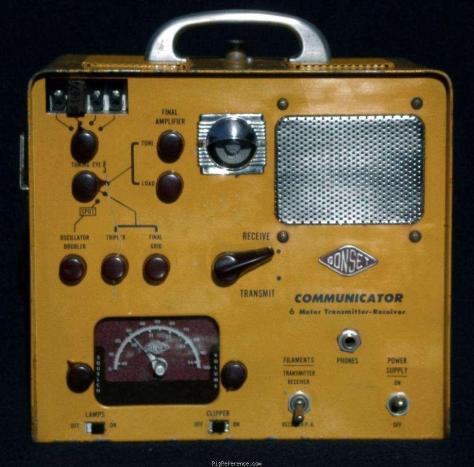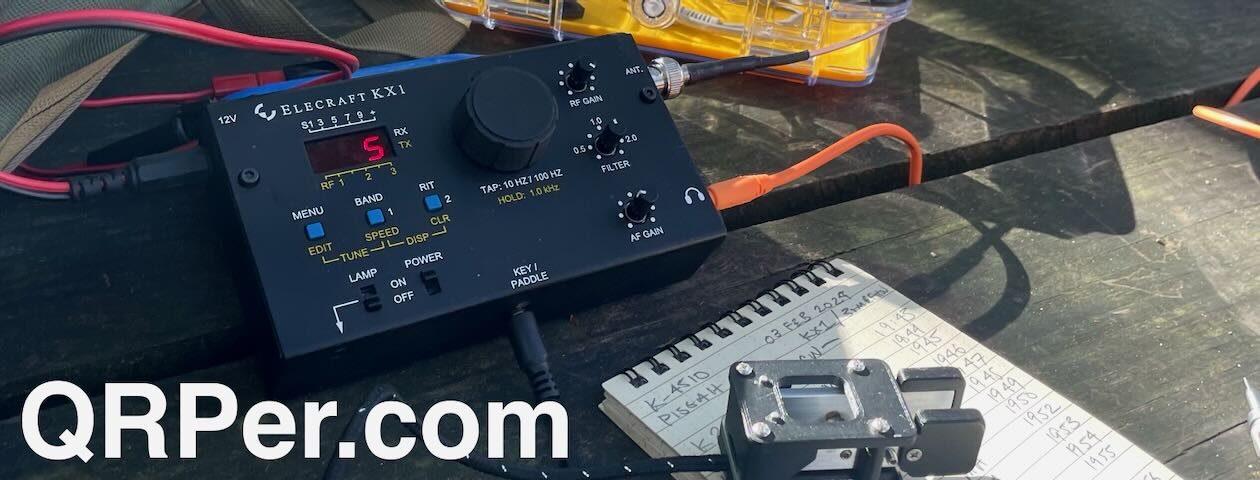Many thanks to Dennis (WQ7O) who shares the following article:
POTA – Getting There
by Dennis (WQ7O)
POTA activity seems to be popular and growing. I have been a ham since the 60s and I am excited by how fun POTA hunting and activating this “new” radio sport can be. I have heard it called “Field Day” every day.
Drawing on decades of hamming experience, I contemplated how we got here. I remember my first field day and the effort required. Basically, equipment meant to be used in an indoor and fixed environment was adapted for portable use. Let’s take a look at what that might mean.
Power supplies that operated on DC were available but expensive. Looking at say, a Drake
TR-4, a popular transceiver at the time, the rig cost $700 in 1968 dollars. The power supply and speaker ran another $200 or so. You’ll need a mic and key, which were not included. Few tuners were available. You could go for a Johnson Matchbox. Drake made the MN-4 and
MN-2000 to match your TR-4. Count on another $200 or so. If you are a CW op and you want a keyer, the Hallicrafters TO keyer and a Vibroplex paddle were another $200. The gear described here would just fit on an office sized desk and don’t ask about the weight.
Now just gather that up and take it to the park, right? Well for starters the DC supply was for mobile use not portable use. You won’t operate for long off a battery with the amperage needed to warm all those tubes. So, bring along a generator and that’s what we did. BTW, we used a truck to transport it all because we needed it. Backpacks weren’t useful.
Antennas were all for fixed use as well. We brought a tri-band yagi and lashed it on a mast to the truck. We ran some wire antennas and we were on the air. Antenna analyzers simply did not exist, we tuned around and graphed it by hand.

This may sound much like a modern field day but hardly the “light and fast” deployment of a SOTA/POTA activation. Also, take it from me, running tube gear in the field is tough. I had a Gonset Communicator (2 meters) issued to me by our ARES group. It was about 100 times the displacement of your trusty handheld and many times the weight.
So since the 60s, the microprocessor, large scale integration and SDR technology have reduced the size and power requirements for all the gear we use. Today a radio that fits in a pocket can include a rechargeable power source, an antenna tuner and run from 160 meters through UHF offering all modes.
From lead acid, NiCads, NiMH, Lithium Ion and now LiPO batteries, the availability of reliable and portable power sources to power rigs and accessories is a fairly recent development. The increased efficiency coupled with decreased power demand have set us free. How many of us have quick deployment solar panels to keep those batteries topped off during extended operation? It beats the noise, smell and mess of gas cans and a generator. Also, you do not want to backpack a lead acid battery for a SOTA activation. Too much weight and not enough power.
Then there is the internet. If you do POTA like I do POTA, you go to the web page and look for spots. How many would you find without the spots and the RBN? When an activation is deployed one of the first actions is to spot it on the POTA app. Thus, as with other digital modes, the internet becomes an integral part. We could do POTA without the internet, but it would be a whole lot harder. And our taken for granted cell phone brings the internet right to the picnic table.

What about the gear? What should we use and how available is it? Early rigs for portable and QRP use were not plentiful or feature rich. The styling of the popular Penntek TR-45 is reminiscent of the Heathkit “Benton Harbor Lunchbox.” At the risk of understatement, the features do not compare.
 The manufacturers responded. We weren’t all going to home brew our QRP rigs. So came the Yaesu FT-817. In 2001, Yaesu introduced the 817 which did all modes, 160 through UHF, ran on batteries, fit in your backpack and was affordably priced. Suddenly, portable operation was possible, versatile, affordable, reliable, practical and fun. We were freed from attics, basements and garages and embraced nature.
The manufacturers responded. We weren’t all going to home brew our QRP rigs. So came the Yaesu FT-817. In 2001, Yaesu introduced the 817 which did all modes, 160 through UHF, ran on batteries, fit in your backpack and was affordably priced. Suddenly, portable operation was possible, versatile, affordable, reliable, practical and fun. We were freed from attics, basements and garages and embraced nature.
I recently built a QRPLabs QCX mini. This tiny rig has more features than we ever knew we needed when we were operating that Drake TR-4. If you want more bands the LNR Mountain Toppers are wildly popular. Other manufacturers, large and small, increased the offerings with different form factors and features.
This included antennas. An early entry was the Buddipole. Many cottage industry entrepreneurs followed and today the selection of quick and easy deployment antennas is broad and deep. From a whip antenna to attach to the rig itself to wire antennas for 160, there are a lot from which to choose. Don’t forget that 3D printing also accounts for a lot of our accessories like keys, cages, stands and winders.
Want to add a tuner to your station? The Elecraft T1, I built mine as a kit, is a superb, self contained tuner and offers broad, automatic matching running on a 9 volt battery. Since the T-1, LDG, MAT MFJ, Icom and others have offered great tuner choices that travel easily as part of your kit.
Anyone who owns a Baofeng knows that the Chinese have entered the ham radio market. While the quality and availability of these rigs can be an issue, they are quite affordable. This brings in new users who learn the hobby and progress to greater things. I have heard hams criticize the quality of MFJ products. MFJ makes the accessories the major manufacturers don’t and at popular prices. When there are more licensed operators, the manufacturers can offer more products at better prices as markets expand. Xiegu HF radios have powered many activations with its built-in battery, tuner and microphone. If POTA and QRP were not driving activity would Icom have brought out the IC-705? The Elecraft KX-2 and 3, the Lab 599 TX-500 and these types of boutique radios answer market demands.
The “Prepper” movement evolved from natural disaster “EmComm” and operating “off the grid” has increased the demand and thus the supply of gear. Building a portable kit has gotten easier and more affordable with a broad selection of choices and options. More is better.
Lots of other simple things have come together to bring us to the “10 minute setup” of the QRP SOTA/POTA activation of today. A whole room full of heavy, power hungry gear has been reduced to a device that literally fits in a pocket. Add a wire and you are on the air. My ham career began as a boy with a tube driven Heathkit transmitter with crystal control fixed frequency in the attic of our family home. I don’t think anybody appreciates more than me opening a backpack and in a few minutes setting up a modern station, wherever I am. QSOs around the country and around the world roll in with a few watts and a wire.
CQ POTA…73 de WQ7O
























